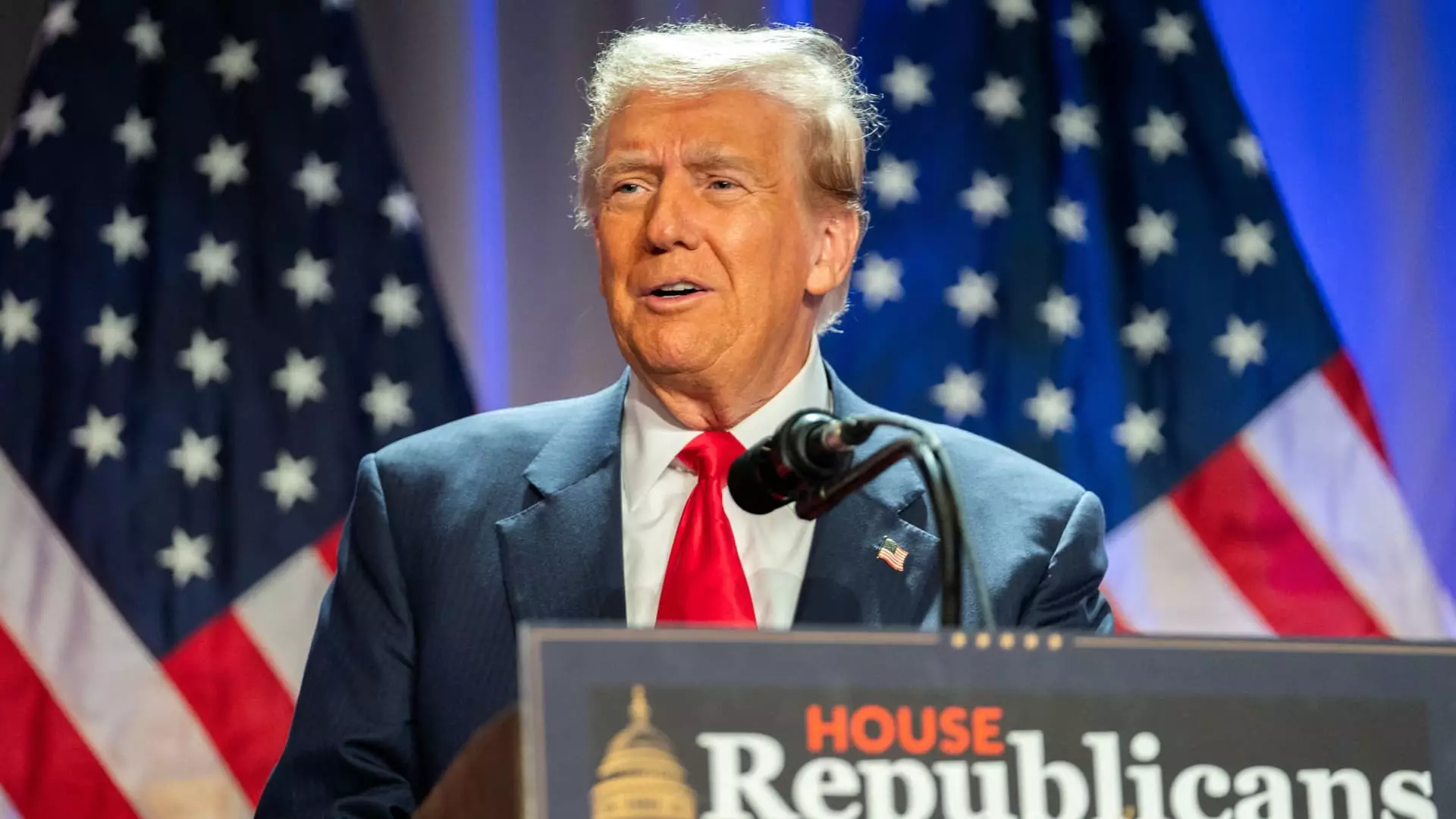As the political landscape evolves post-Donald Trump’s election, the air is thick with anticipation surrounding the expiration of significant tax provisions and the potential introduction of fresh promises from the new president. The looming deadlines and competing interests within Congress create a complex tapestry of opportunities and challenges for lawmakers as they work toward reshaping tax policy. Given the substantial Republican majority in both chambers, there exists a pathway to significant reforms through the process known as budget reconciliation. However, navigating this intricate legislative terrain is fraught with difficulties that could impede swift action.
Republican legislators are anticipating the use of budget reconciliation to sidestep the Senate filibuster, enabling them to push through a new tax agenda more smoothly. This parliamentary maneuver allows the administration to streamline the legislative process, ideally enabling action within the critical first 100 days of Trump’s presidency. Despite this advantage, experts caution that the process will not be without its hurdles.
Howard Gleckman, a senior fellow at the Urban-Brookings Tax Policy Center, commented on the complexity of the situation, suggesting that lawmakers’ loyalties may extend beyond party lines and reflect the diverse needs of their constituents. This dimension intensifies the challenge as representatives must reconcile localized demands with national policy objectives.
With a slim margin in Congress, the Republican party faces an uphill battle in reaching consensus among its various factions. The 2017 Tax Cuts and Jobs Act (TCJA), a notable achievement from Trump’s previous term, is now under review as millions of tax breaks set to expire by 2025 cast a lengthy shadow. Key provisions like lower tax brackets, enhanced standard deductions, and the expansive child tax credit present both opportunities and pitfalls for legislators aiming to balance legislative priorities.
Moreover, during his campaign, Trump floated numerous tax ideas that could reshape the fiscal landscape, from eliminating taxes on tips and Social Security benefits to the sweeping notion of abolishing income tax entirely. Each of these proposals, while potentially appealing to various voter demographics, adds layers of complexity to an already contentious political environment.
Molly Reynolds, a senior fellow at the Brookings Institution, elaborated on the friction inherent in introducing multiple policy changes concurrently. The more provisions included in discussions, the more pronounced the divisions among lawmakers may become. This fragmentation can lead to lengthy negotiations and unintended losses of focus, potentially jeopardizing critical tax reforms before they even take shape.
The critical timeline facing lawmakers cannot be overstated, as Congress faces the impending deadline of December 20 to secure funding for the government and avert a shutdown. This looming deadline may ultimately overshadow Trump’s tax agenda, forcing leaders to prioritize matters of immediate concern over long-term reforms.
Despite the grim outlook painted by experts regarding the expeditious passage of tax legislation, there remains a glimmer of optimism. Some analysts suggest that if strategic alignments and compromises can be achieved, the tax bill could potentially materialize by October 1, 2025, coinciding with the end of the federal fiscal year.
However, as Gleckman poignantly emphasized, the notion that such sweeping reforms could be executed within Trump’s initial 100 days appears overly ambitious, if not entirely unrealistic. Unlike rapid decisions that often characterize the private sector, the gears of government turn slowly, particularly when addressing the complexities of tax policy where each adjustment has far-reaching implications.
As congressional lawmakers brace themselves to engage in deliberations over expiring tax breaks and new initiatives from the Trump administration, the narrative is anything but straightforward. Competing interests, intricate legislative procedures, and the ever-present specter of budgetary limitations form a multifaceted challenge that demands careful navigation. The coming months will undoubtedly test the resolve and ingenuity of legislators who must walk the fine line between party loyalty and the representational needs of their constituencies. Whether they succeed in ushering in significant tax changes will remain an open question as the political winds continue to shift.

